14
Thomas A. Stewart encouraged the development of the Trent Canal, worked on its building committee, raised money for the Irish famine, and was a trustee for St. Johns Church , Armour School, and the grammar school. In 1837 he drilled a small company of soldiers in preparation for the rebellion. During the summer of 1847 Thomas A. Stewart was one of the volunteers at Hospital Point along with Dr. Hutchison, caring for the sick Irish immigrants. Sadly, he became one of the casualties. Today in Peterborough there is a high school named for him, in honour of all his work for the early schools in Peterborough as well as his other achievements around town.Frances Stewart became known through the publication of many of her letters that she had written to family and friends. During a trip home to Ireland in 1853, Stewart's granddaughter, Ellen Dunlop, brought home many of these letters. Ellen eventually compiled these letters into a book and publish them as 'Our Forest Home', giving us one of the earliest accounts of life in Peterborough and great insights into the trials of life in the backwoods of Upper Canada from the perspective of a middle-class Irish woman.
15
Young Catharine Parr Traill19th Century,Circa 1820
Suffolk, England
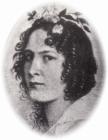 Credits:
Credits:NAC C-067337
National Archives of Canada, Ottawa, Ontario
16
Catharine Parr Strickland was born in Suffolk, England on January 9, 1802. She was the fifth of six children. Growing up, Catharine learned much about nature and plants from walks with her father, Thomas Strickland.Upon her marriage to Lieutenant Thomas Traill in 1832, the pair had already made the decision to emigrate and join her brother Samuel Strickland and his family in Upper Canada. They were joined on their adventure by her sister and brother-in-law, Susanna and John Moodie.
The Traills set sail for Upper Canada on a cargo ship named Rowley during the first week of July, 1832, and arrived in Montreal on August 21. Before they were able to set out on the rest of their journey to the backwoods, Catharine was stricken with what they believe was cholera, a disease that was ravishing the cities and new immigrants. After several days of confinement and severe pain, Catharine recovered enough to continue on towards their new home in Douro Township
17
They finally arrived in Peterborough on September 9, 1832. Catharine and Thomas stayed with her brother, Samuel, and his family in Lakefield, until their cabin could be built. The Traills quickly made friends with many of the good families of Peterborough, including the Stewarts, who helped them during their first months in the backwoods. Catharine and Frances Stewart, in particular, became great friends. Both were interested in literature and botany, and Frances shared all of the wisdom she had gathered during her first years in the backwoods. Through Frances, Catherine "learned more practical lessons for my guidance in the new life of a settler's wife in the backwoods than any book could have given me, had any book been written on the subject." Their first home was named Lake Cottage and sat on land with a grand view of Lake Katchewanooka and her brother's home.Over the years Catharine and Thomas were forced to move several times due to financial hardships. They lived in Douro, Ashburnham, Gore's Landing and Lakefield.
18
Example of a Pioneer Home from Catharine Parr Traill's 'Female Emigrants Guide to Canada'19th Century, Circa 1854
Peterborough, Ontario
 Credits:
Credits:NLC -1390
Female emigrants guide, Toronto C[Canada West]; Maclean, 1854
National Library of Canada, Ottawa, Ontario
19
The first few years in the backwoods would be an easy time for the Traills. Thomas worked at clearing the land and planting crops; Catharine explored the area and made friends with the local natives. Catharine's early letters home were compiled for publication with hopes of encouraging future immigrants. 'The Backwoods of Canada' was published in London in two parts 1834 and has been reprinted in many editions since.20
Traill entry in Dr. Hutchison's Patient Ledger19th Century, Circa 1833
Peterborough, Ontario
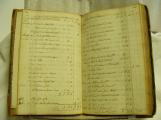 Credits:
Credits:Hutchison House Museum, Peterborough, Ontario
21
In addition to claiming a close friendship with the Hutchisons, the Traills also subscribed to the doctor's medical insurance and were faithful subscribers until his death. Catharine later compares an instance where Dr. Hutchison diagnosed one of her children, to an illness that was affecting Ellen Dunlop's brother-in-law, Dr. Thomas Hay.To Ellen Dunlop, Decemeber25, 1856 re: Fatal illness of Ellen's brother-in-law
"…The poor Doctors sufferings from the boils I was not surprised at, for his body was in a sore state when I was with him; hardly then indeed so serious but very irritating and weakening they must have been-they often seemed to distress him- especially over the back and breast. I should consider the increase of them as a fatal symptom- When Dr Hutchison saw them on my little Helen he said she saw it wasn't far from her end- I had fancied it a good sign knowing no better- Your good husband will for many a year look back upon his labour of love, and may the consciousness of having done his duty smooth his own bed in sickness, and I trust he will not want a friend to render aid to him and his, in the hour of need, sickness, sorrow or any other adversity- Here we seem to lead a useless life, doing good to no one, not even to ourselves; our present condition seems to me like stagnant water, on which no vessel floats for either profit or pleasure-"
22
Traill entry in Dr. Hutchison's Birth Registry8 March 1836
Peterborough, Ontario
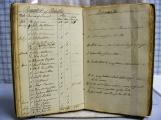 Credits:
Credits:Hutchison House Museum, Peterborough, Ontario
23
Catharine Parr Traill would give birth to nine children; the first, James George, arrived in June, 1833. When close to giving birth, Catharine would often stay with friends, such as the Stewarts, so as to be close to Dr. Hutchison in Peterborough. Dr. Hutchison would deliver five of the Traill children.Journal of Catharine Parr Traill, June 27, 1837
"…On the 16th of May just a few minutes before three o'clock it pleased Almighty God to bless my eyes with a the sight of an infant son to be named…..Owing to the badness of the roads and to the rain which fell in torrents Dr. H did not arrive till more than two hours after the birth of the babe, my only assistant was an ignorant Irish woman and our cousin Jane Allcock and I cannot but observe the contrast between females in this country & those at home under the same circumstances….."
24
The Old Doctor; A Backwoods Sketch by Catharine Parr Traill19th Century, Circa 1835-1840
Peterborough, Ontario
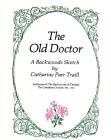 Credits:
Credits:The Old Doctor; A Backwoods Sketch by Catharine Parr Traill edited by Jean Murray Cole
Hutchison House Museum, Peterborough, Canada first edition 1985
Original illustrations by Lynne Clifford-Ward
25
The Doctor and his Patients20th Century, Circa 1985
Peterborough, Ontario
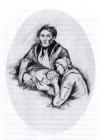 Credits:
Credits:The Old Doctor; A Backwoods Sketch by Catharine Parr Traill edited by Jean Murray Cole
Hutchison House Museum, Peterborough, Ontario, first edition 1985
Original Illustrations by Lynne Clifford-Ward
26
Throughout most of her adult life, Catharine Parr Traill kept a journal to record any notes, sketches or ideas that might be developed into stories or articles. One such sketch is an undated, fictionalized account of what is believed to be her doctor, Dr. Hutchison.This excerpt is taken from 'The Old Doctor; A Backwoods Sketch':
"The doctor was a model of strength, both mental and physical, of middle height and half as much above it but not fat; is hair silvered, but not white, still curled in thick masses above a high broad brow. The form of the head indicated metal power, firmness and decision; the height from ear to the crown showed a little too much destructiveness but the fine arch over the upper region of the forehead displayed benevolence in a still greater degree. The keen blue fiery eye, mouth slightly sarcastic, indicated to those who were skilled in reading the human mind from the human face the decisive character of the man.
The old doctor was a Radical in his way, but it was against abuses and follies, all, as he said, for the good of his species. He ran atilt at idleness and vice, knocking down all opponents with the power of his keen sarcasm and downright bluster. However, when real sympathy was required to the sick and unfortunate he was tender and generous and loving as a father. But while he shewd benevolence to such as were suffering from the visitation of God or incidental causes, he gave no comfort to the idler who was content to fold his arms and sit down in hopeless apathy lamenting over a hard fate that might have been averted by energy of body or prudent forethought."
27
Pressed Grasses from Catharine Parr Traill's Scrapbook19th Century, Circa 1850s
Peterborough, Ontario
 Credits:
Credits:96-1012
Trent University Archives